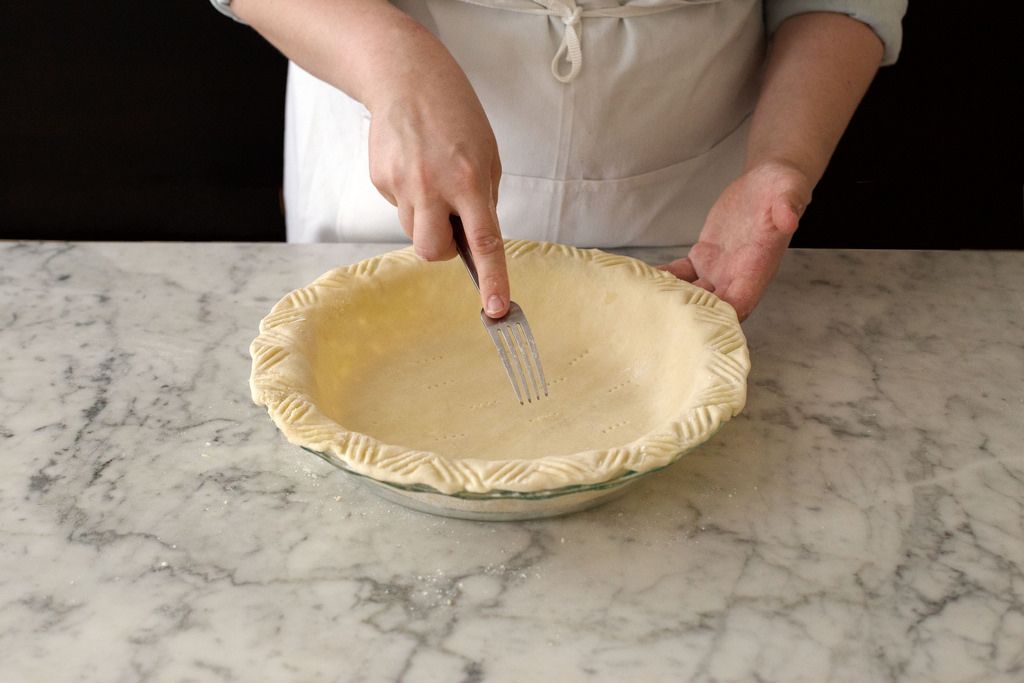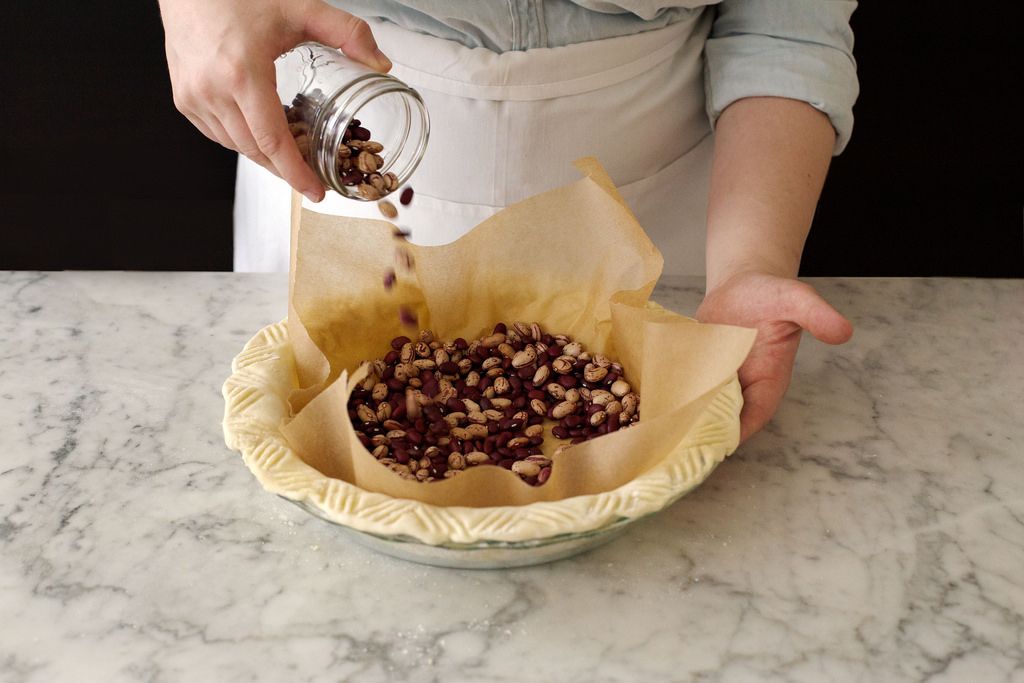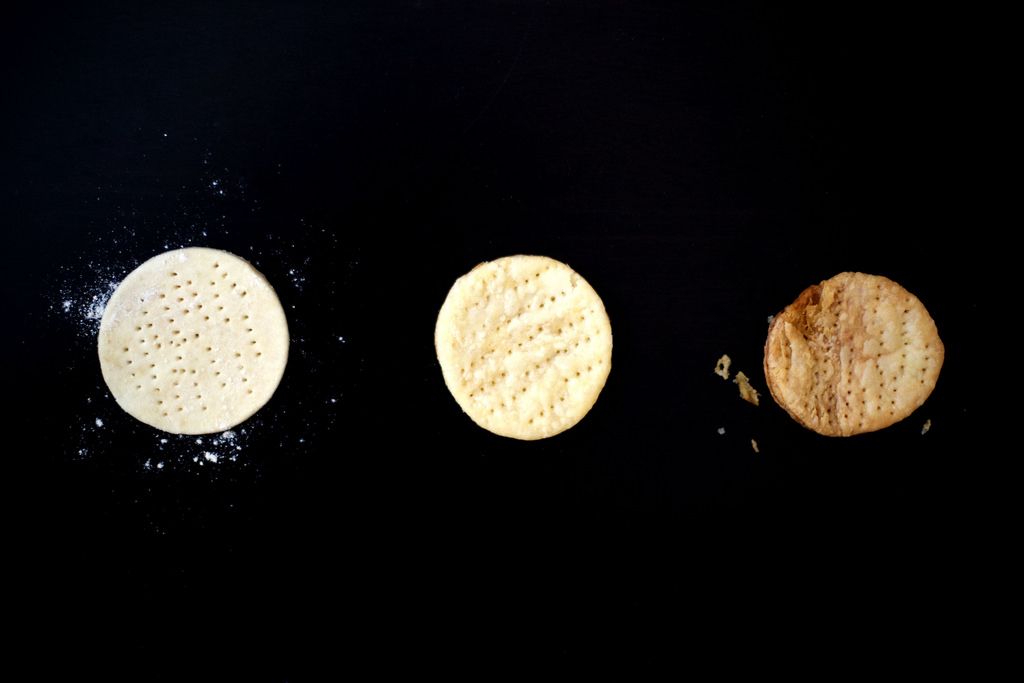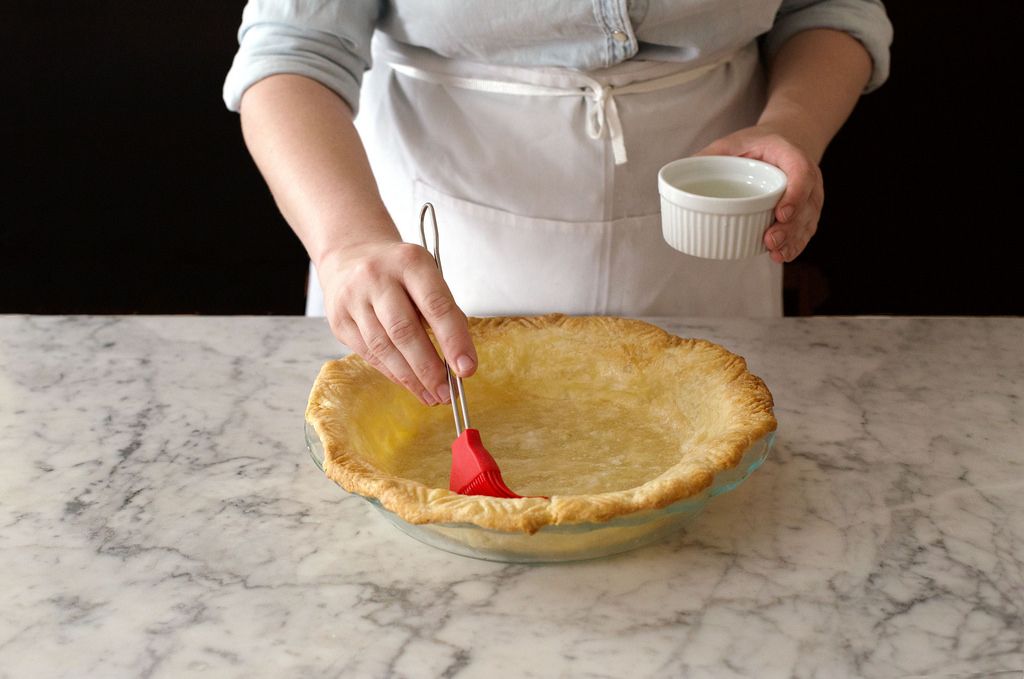Bake
How to Blind-Bake Pie Crust Like a Pro
Make flakier, creamier, just-plain-better pies with these tips.
Photo by James Ransom
52 Days of Thanksgiving

52 Days of Thanksgiving
Top-notch recipes, expert tips, and all the tools to pull off the year’s most memorable feast.
Check It OutPopular on Food52
Continue After Advertisement
36 Comments
marci
November 22, 2022
You say above “I tend to blind bake a lot of my pie crusts—even fruit pies with double crusts!” There is mention in the comments of covering the edges while baking, or wetting the edges. In my experience, fresh unbaked dough (the top) just will not stick to firmer, cooked dough (the bottom). Can you please advise exactly how you do this? Thanks!
Elaine S.
December 21, 2021
I would love to make a deep dish quiche in a springform pan but despite numerous attempts, the sides always fall down during parbaking the crust. I use the all buttah crust recipe and fill the empty crust with weights but nothing seems to help. Any hints?
J
August 25, 2021
My favorite pastry tip is to go to Home Depot and buy a ceramic floor tile. It will cost about $3. Most are 12” but some are larger: mine is almost 16” square. You want the largest one you can find, and one with a smooth surface. Mine lives in the refrigerator, stored vertically, so takes up zero space. When I need a cool surface to fraiser or roll out my dough, I have one! No need to spend a fortune at Williams-Sonoma on a 20# marble slab!
J
August 25, 2021
I’m totally addicted to blind baking. After experimenting with lattice tops, I gave up and now use adorable little pastry cutters, so I now decorate the tops with stars, hearts, angels, or whatever amuses me. For a blueberry contest, I made little “blueberry” clusters out of pastry. Because they’re thin, I sometimes bake them separately on a piece of foil, because they’ll brown in 10 minutes. I then place them on top of the pie when the filling is baked.
Andrea
April 25, 2021
What is a solid ratio for the dough? Any modifications if using cassava flour and lard?
Diane
November 21, 2020
I've never had success with par-baking. It always, always shrinks. I've wasted multiple pounds of beans; tried lentils; bought ridiculously expensive ceramic balls; and none worked. I see this article recommends over 400 oven. Is a COLD or frozen glass pan safe at those high temperatures? I honestly can't remember if I used that high a temp or not. MAYBE, and that's a big maybe, I might try par-baking just one more time and be sure the oven is over 400.
Marye S.
October 28, 2022
If your glass pan is made from borosilicate glass, it will be ok. This is what the old Pyrex glass was. Be sure to check the label when you buy anything new.
Jess B.
June 1, 2018
Hi Erin! Thanks for all your pie crust and pie filling articles - I am getting so excited for pie-making this summer! Question: in this post, you say to reheat the pie on a baking stone so crisp up the bottom, which can get soggy as the pie sets. In another post about cutting the perfect slice, however, you say to let the pie cool completely before cutting. Wouldn’t the bottom get soggy again?
Stephanie B.
December 7, 2015
Is it safe to put a cold glass our oan I to a 425 oven? I have some worry.
Rosalind P.
August 27, 2020
I share your worry and haven't found the perfect solution. But what I do is take a steaming hot cloth and set the glass on it for a few minutes, to temper the temperature rise. I still hold my breath when the pan goes into the oven, but so far, so good. Would welcome a "genius" solution.
Beachside B.
October 5, 2020
You might find this helpful.
https://www.oxo.com/glass-pie-plate-with-lid.html
OXO makes their pie plates from borosilicate which resists thermal shock. In the past Pyrex used borosilicate, however, they are now made of soda glass which can cause them to shatter during extreme temperature change.
https://www.oxo.com/glass-pie-plate-with-lid.html
OXO makes their pie plates from borosilicate which resists thermal shock. In the past Pyrex used borosilicate, however, they are now made of soda glass which can cause them to shatter during extreme temperature change.
Laura415
November 14, 2015
I my experience 2 crust pies are not par baked. If you worry about soggy crust under the fruit then brush the inside of the bottom crust with egg white to create a protein barrier that helps when baking raw crust pies.
marci
November 22, 2022
Laura, do you mean that you’re brushing the raw dough with raw egg, and then adding your filling?
greglum
November 13, 2015
How do you add a top crust when making a double-crusted fruit pie with a par-baked bottom?? I made an apple pie the other day, par-baking the bottom before filling and adding the top, but when I got to slicing, the crusts just separated and got messy - is there a way to fix this, or is that just the nature of a par-baked bottom + an unbaked top?
Rosalind P.
August 27, 2020
It's awkward but if you wet the edges of both top and bottom, before you press them together, it helps I also avoid the problem by using a crumb/stresusel topping: for a frozen pie dough, here's how I do it: bake the pie with a foil cover for about 2/3 of the way through. Add the topping and finish baking. (and sorry if this seems complicated, but I bake the topping about 2/3 of the way also -- before it's fully done. Adding it this way keeps it crisp all the way through.)
Mendonoma
January 25, 2015
Great compilation. And here's what I used for years as 'pie weights'...remember doggie choke chains...metal linked things. We all had too many of them. Well, they make great pie weights. Easy to clean, malleable, easy to pick up when cooled, easy to store...much better than beans or metal beads.
beekeeper
January 25, 2015
This is a great post. I have always used glass pie pans until Thanksgiving when one was accidentally broken. I pulled out a cast iron skillet and used it for the deep dish apple pie. It had the crispest crust I have ever achieved in 50 years of baking. Now I bake all my pies in cast iron skillets.
Horto
July 30, 2014
how do you deal with par baking for fruit pie that you want to add a top crust?
i would think the edge will burn…during the second bake
i would think the edge will burn…during the second bake
AntoniaJames
November 21, 2014
I always cover the upper edge with foil or a silicone ring designed for this purpose, before putting it in the oven to blind bake. ;o)
Sara S.
July 27, 2014
I have the same probem as Pastryology with shrinking crusts.
Is is safe to put a pyrex pie plate on a baking stone?
Is is safe to put a pyrex pie plate on a baking stone?
Erin J.
July 30, 2014
See my comment to Pastryology below - the main culprits here are butter content, temperature of dough, and temperature of oven. If your dough is based on a solid ratio, the dough is well chilled (firm to the touch), and the oven temperature is high (425), you should experience less shrinkage!
Rosalind P.
August 27, 2020
I follow ALL the hints and instructions -- resting, freezing, weights, edge protections -- for pre-baking but always, always get shrinkage. I just bought "dough improver" from King Arthur Flour, which purports to stop shrinking. We shall see. if it works, I'll post, although I generally don't like to shill products.
Zachary C.
July 27, 2014
I can't seem to par bake for quiche or custrads without having them leak out the bottom of the crust. Tips?
Erin J.
July 30, 2014
Perhaps you're rolling your dough too thin, causing rips or tears in the dough that the custard sneaks through during baking. Try rolling your dough a little thicker (1/4-1/2 inch). If you don't notice the holes until after you par-bake it, you can patch the holes with egg wash or egg whites - brush generously over the holes and bake until the egg is set.
Laura415
July 25, 2014
Love the tip about egg white on the crust. I was told to do the egg white wash on raw pie dough before filling and baking. I think it still helps. Any protein barrier will help the crust resist sogginess. A layer of almonds thinly sliced will also make a great barrier in a fruit pie. I don't often par-bake but maybe I will after this.
Rosalind P.
August 27, 2020
Sogginess: layer of nuts, sliced or ground. I use finely ground cereal crumbs because I once read that cookie crumbs would work, but I don't want the extra sugar or fat. A fine and thin layer, after the crust is baked and coated with egg white.
Catherine
July 24, 2014
Thx for a great post. I have had pies where it tastes like there is a thin, crispy layer of sugar between the bottom pastry and the filling. It tasted great. Do you get this by sprinkling sugar on top of the egg wash and heating at high temp? Or mixing sugar with the egg wash?
Erin J.
July 30, 2014
Hi Catherine, I'm not entirely familiar with what you're describing but it definitely sounds like a great idea. I'd try a pie crust doing just what you described above: sprinkling a thin layer of sugar over the bottom crust before par-baking at 425. If you give this a try, please keep us posted!
Pastryology
July 23, 2014
I have a terrible time with shrinking crusts that creep away from the edges of the pie plate like receding glaciers. I chill the dough after forming it and before rolling it. I often freeze it for 20 minutes before blind baking. And they still shrink. Any tips you can offer?
Erin J.
July 30, 2014
The most likely culprit is that your dough has too much fat in it. No matter how well chilled the dough in the pie plate is, if the ratio of fat is too high, it can cause the butter to melt before it can properly produce steam in the oven, making your crusts shrink. I would try making sure to chill the dough at every step of the process for at least 30 minutes, then make sure it chills well inside the pie plate until it is entirely firm to the touch. Then make sure to bake it at a high temperature - a lower temperature will cause the butter to melt rather than produce steam as well!
Rosalind P.
August 27, 2020
Too much butter? How do I figure that one out? I have the same shrinkage problem and already do all the things you're sugestion. I I like all butter (no shortening, no lard). What would you suggest as a butter/flour ratio to avoid shrinkage.




 Pictured: Raw dough, partially par-baked crust, and fully par-baked crust.
Pictured: Raw dough, partially par-baked crust, and fully par-baked crust.
/fe33218d-b8f4-4164-a69b-eb5d9d7bb8ab--Chocolate_Cherry_Pie.jpg)
/7fc96a58-2824-4df2-8cce-029c08cdf169--Caramel_Pie.jpg)
/96bf7aa3-ab44-4a22-88f2-de13de212a6c--2013-0806_genius-blueberry-pie-1-020.jpg)
/0b8e9905-8372-4813-a0d3-f284647acd65--StrawberryPie-1.jpg)
/71d2d5b7-a768-4d04-ab16-30470bf3dd87--food52_pies_106.jpg)

See what other Food52 readers are saying.